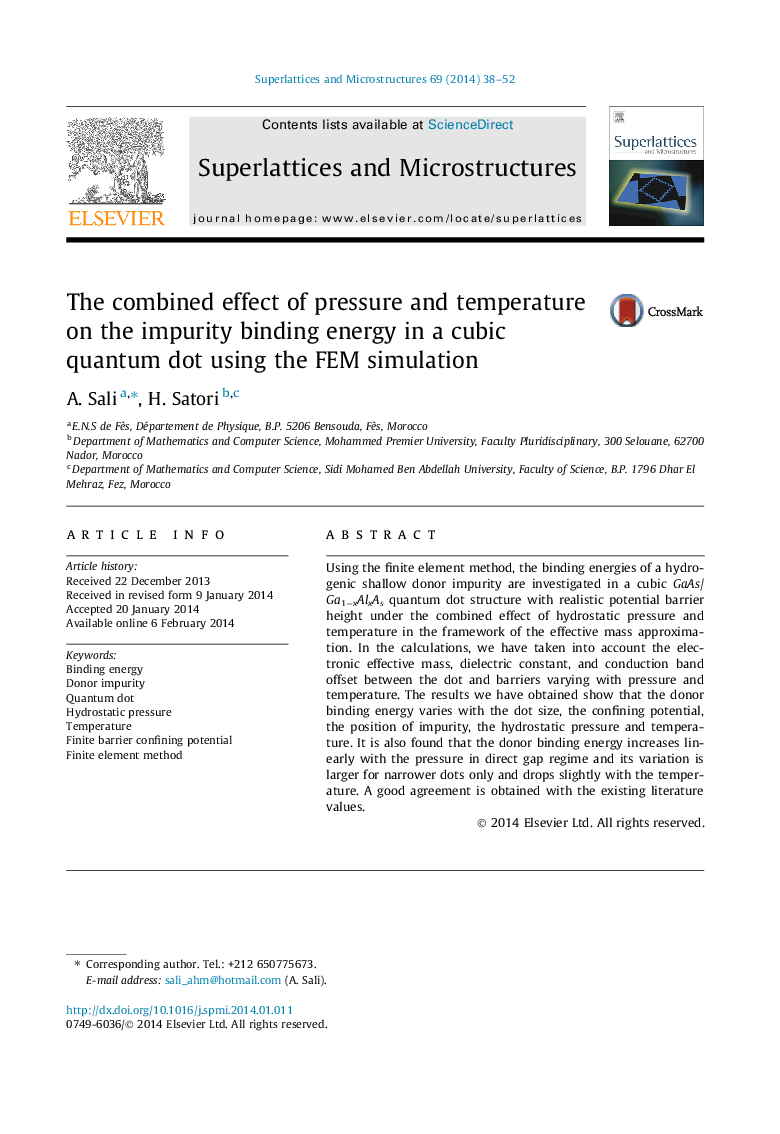| Article ID | Journal | Published Year | Pages | File Type |
|---|---|---|---|---|
| 1553521 | Superlattices and Microstructures | 2014 | 15 Pages |
•We report a calculation of the donor binding energy in a cubic quantum dot.•The effect of the hydrostatic pressure is more noticeable for narrow dots.•The binding energy is an increasing function of the Al concentration x.•The binding energy decreases from the center to the corner of the cube.•The increment of temperature leads to a reduction of the donor binding energy.
Using the finite element method, the binding energies of a hydrogenic shallow donor impurity are investigated in a cubic GaAs/Ga1−xAlxAs quantum dot structure with realistic potential barrier height under the combined effect of hydrostatic pressure and temperature in the framework of the effective mass approximation. In the calculations, we have taken into account the electronic effective mass, dielectric constant, and conduction band offset between the dot and barriers varying with pressure and temperature. The results we have obtained show that the donor binding energy varies with the dot size, the confining potential, the position of impurity, the hydrostatic pressure and temperature. It is also found that the donor binding energy increases linearly with the pressure in direct gap regime and its variation is larger for narrower dots only and drops slightly with the temperature. A good agreement is obtained with the existing literature values.
